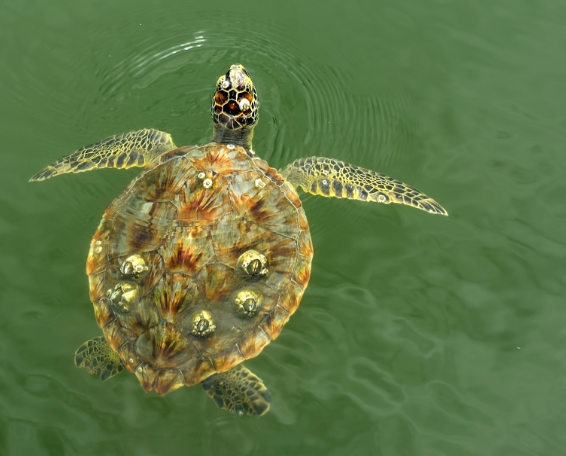Do Barnacles Hurt Turtles? Understanding the Impact and Solution
Barnacles often hitch a ride on turtles, but what impact do these crustaceans have on their hosts? Do barnacles hurt turtles? This article delves into the nature of barnacles, their effects on turtle health, and provides valuable information on managing barnacle infestations on pet turtles. Keep reading to discover everything you need to know about this fascinating yet potentially harmful relationship.

What Are Barnacles and Why Do They Attach to Turtles?
Barnacles are small, hard-shelled crustaceans that primarily live in the ocean. They are sessile creatures, which means they permanently attach themselves to hard surfaces such as rocks, ship hulls, and even the shells of marine animals like turtles. The reason barnacles attach to turtles is opportunistic: a turtle’s shell offers a mobile habitat that allows barnacles to travel to nutrient-rich waters that bolster their survival chances.
Barnacles are most commonly found on the carapace (back shell) of turtles, but they can also attach to the plastron (underside), flippers, and even around the eyes. While a few barnacles usually don’t pose a significant threat, a heavy infestation can lead to various health issues.
How Do Barnacles Affect a Turtle’s Health?
The presence of barnacles on turtles can have several negative impacts, particularly when the infestations are heavy.
One of the most immediate concerns is the physical burden they place on the turtle. Barnacles add extra weight and create additional drag in the water, making it more energy-intensive for turtles to swim. This can lead to increased fatigue and reduce the turtle’s ability to escape predators.
Barnacles can also compromise the turtle’s shell. Over time, large colonies of barnacles can erode the turtle’s shell, leading to infections and other health issues. Since the shell plays a crucial role in protecting the turtle from environmental hazards and predators, any damage can be severely detrimental.
Foreign bodies like barnacles can also introduce bacteria and other pathogens. This increased risk of infection can be particularly troubling for turtles that are already stressed or weakened. In severe cases, the health impacts can become life-threatening.
Are Barnacles Dangerous to Pet Turtles?
Pet turtles are generally kept in controlled environments where barnacles are less likely to be an issue compared to wild turtles. However, if a pet turtle that has lived in a natural water body is brought into a home environment, it may carry barnacles. Even though barnacles are less common in freshwater, they can still find their way onto pet turtles sometimes.
While barnacles are not immediately life-threatening to pet turtles, they can still be dangerous if not addressed. The reduced mobility and potential for infection apply to pet turtles just as they do to their wild counterparts. Moreover, the confined spaces and less diverse habitats in which pet turtles live can make infestations more problematic.
How to Safely Remove Barnacles from Pet Turtles?
Removing barnacles from pet turtles is a delicate process that requires caution and precision. The goal is to eliminate the barnacles without causing harm to the turtle itself. Here are the steps to safely remove barnacles:
Consult a Veterinarian: Before attempting barnacle removal, seek advice from a qualified veterinarian specialized in reptiles. They can guide you through the process or perform the removal safely.
Gather Supplies: You’ll need rubber gloves, a pair of tweezers or a small spatula, antiseptic solution, and fresh water.
Prepare the Area: Make sure the work environment is clean and quiet. Lay down a soft towel to prevent the turtle from slipping and to provide comfort.
Soak the Turtle: Soak your turtle in warm, fresh water for about 20-30 minutes to soften the barnacles. This helps in easier removal.
Gentle Removal: Using tweezers or a small spatula, gently pry the barnacles off the turtle’s shell. Be careful not to damage the shell or cause pain to the turtle.
Disinfect the Area: Apply an antiseptic solution to the areas where barnacles were attached to prevent infection.
Post-Removal Care: Keep the turtle in a clean, stress-free environment and monitor it for signs of infection or stress.
Removing barnacles is not a one-time solution, and the turtle should be regularly checked to prevent re-infestation. Always prioritize the well-being of your pet during this process.
Conclusion
So, do barnacles hurt turtles? The answer is most likely yes. Barnacles are fascinating creatures with a unique way of life, but their relationship with turtles can be harmful. From impairing mobility to causing infections, barnacles pose several risks, especially for turtles with heavy infestations. Understanding how to safely remove barnacles from pet turtles is crucial for their health and well-being. Consult a veterinarian for guidance and ensure you’re taking the right steps for the care of your shelled friend.
FAQs
Are barnacles parasites to turtles?
No, barnacles are not parasites but commensals. They attach to turtles for mobility and access to nutrient-rich waters but do not directly harm the turtle for their benefit.
Are turtles with barnacles sick?
Not necessarily. While barnacles can lead to health issues, their presence alone does not indicate sickness. However, heavy infestations can cause secondary problems like infections.
How do turtles get rid of barnacles in the wild?
Wild turtles often scrape off barnacles by rubbing against rocks or other hard surfaces. Some may also have cleaner fish picking off barnacles.
